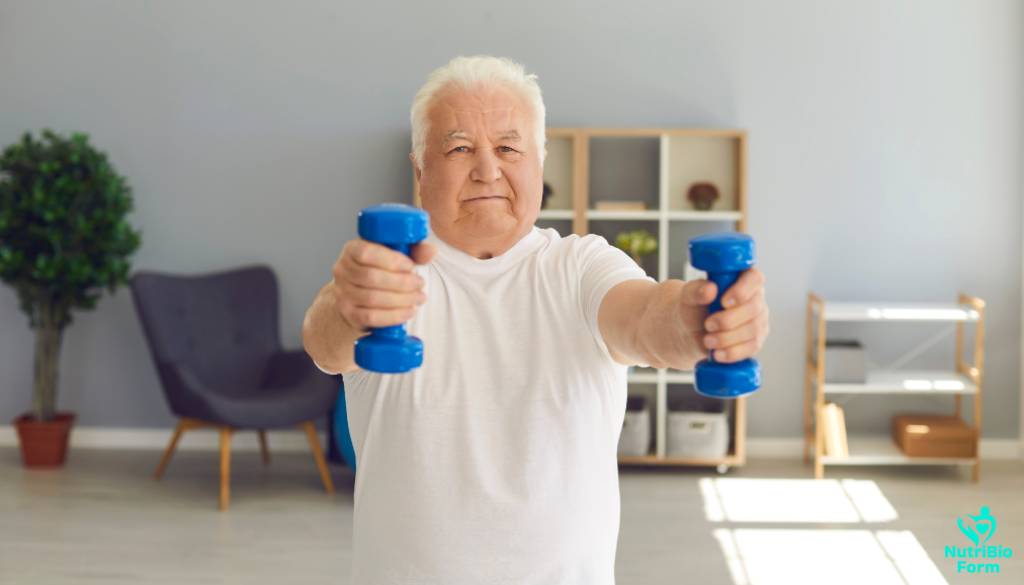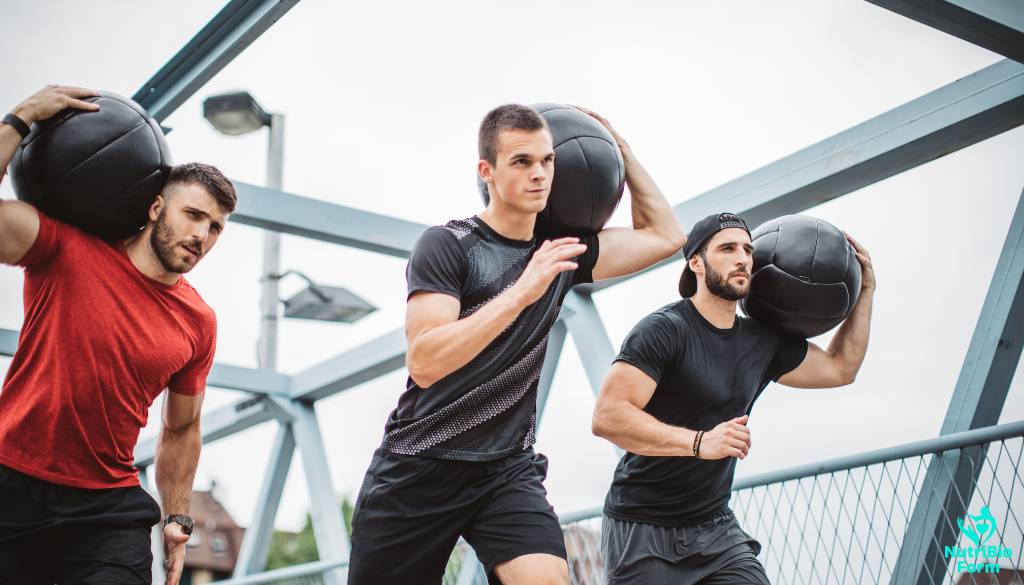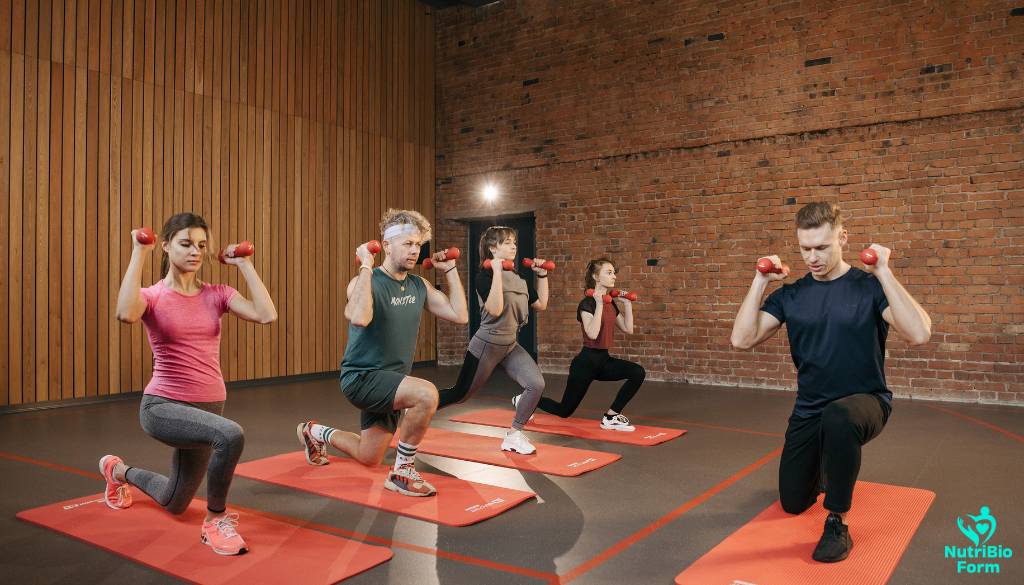When we talk about physical fitness, we think of more than looks or passing trends. It’s about our health and happiness. We want to know how fitness affects our bodies, minds, and spirits.
Being fit is not just about the gym. It’s about living a balanced and happy life. Exercise is key to feeling good and living well. Let’s explore what it means to be physically fit together.
Key Takeaways
- Physical fitness encompasses overall health beyond appearances.
- Exercise contributes significantly to mental and emotional health.
- Benefits of being fit lead to improved quality of life.
- Wellness is a journey that involves both physical and psychological elements.
- Understanding physical fitness helps us set achievable goals.
Introduction to Physical Fitness
Starting an active lifestyle means more than just working out. It’s about understanding the whole picture of health. This includes our mental, emotional, and physical well-being. Seeing fitness as a complete package helps us see its importance in our daily lives.
The word “fitness” has changed a lot. In the past, staying active was key for survival. But as society changed, many of us became less active. Now, we know that being active is crucial for our health. It guides us to make better choices about how we move and exercise.
Seeing fitness as a whole helps us value its role in our lives. This way of thinking leads to lasting changes that improve our overall health. It helps us stay well in a world that’s always changing.
| Aspect | Traditional View | Holistic Approach |
|---|---|---|
| Definition of fitness | Primarily physical strength and endurance | Integrates mental and emotional well-being |
| Activities | Exercise-centric | Includes mindfulness, nutrition, and rest |
| Goal | Aesthetic or performance-based | Overall health and fulfillment |
| Measurement of fitness | Quantifiable metrics | Qualitative life satisfaction |
What is Physical Fitness?
Physical fitness is about being able to do daily tasks easily and with strength. It also means handling stress and staying healthy. This broad view shows why being fit is key for our well-being.

Definition of Physical Fitness
Physical fitness is about our body working well together. It’s about being healthy and skilled enough for everyday life. This balance helps us face life’s challenges and keeps us healthy.
Components of Physical Fitness
There are five main parts of fitness that are crucial for our health:
- Cardiorespiratory Fitness: This is how well our heart and lungs work during exercise.
- Muscular Strength: It’s the strongest force our muscles can make in one try.
- Muscular Endurance: This is how long our muscles can keep working without getting tired.
- Body Composition: It shows how much fat and muscle we have in our bodies.
- Flexibility: This is how far our joints can move.
Each part is important for our health and daily life. By working on these areas, we can improve our health and reach our fitness goals.
Benefits of Being Fit
Being physically fit has many benefits that make our lives better. It helps us stay healthy and feel good. Let’s look at how fitness improves our health and happiness.
Physical Health Benefits
Physical fitness is great for our health. It helps us avoid serious diseases and keeps our minds sharp. Here are some key benefits:
- Lowered risk of heart disease
- Improved cardiovascular function
- Enhanced mobility and flexibility
- Better weight management
- Stronger immune system
These benefits make us live longer and feel more energetic every day.
Mental and Emotional Health Benefits
Being fit is also good for our minds. It helps us feel less stressed and more focused. Here’s how:
- Reduce symptoms of anxiety and depression
- Enhance cognitive function
- Improve mood
- Boost self-esteem
By focusing on fitness, we improve our mental health and feel more balanced.
Improved Quality of Life
Finally, being fit makes our lives better overall. It helps us be more productive and happy. Here’s how:
- Increased productivity
- Better sleep quality
- Enhanced social interactions
- Greater life satisfaction
Regular exercise lets us enjoy life more and do what we love. Fitness truly changes our lives for the better.
The Components of Physical Fitness
Understanding the components of fitness is key to achieving optimal health and performance. Each part plays a unique role in our overall well-being and physical abilities. We’ll look at the main components of fitness, like cardiorespiratory fitness, muscular strength and endurance, body composition, and flexibility. We’ll see why they’re important in our fitness journey.
Cardiorespiratory Fitness
Cardiorespiratory fitness is about how well our body supplies oxygen during long physical activities. It’s vital for our health. Activities like running, swimming, or cycling improve our heart and lung health. This leads to better performance in workouts and daily life.
Being fit in this area also lowers the risk of chronic diseases. It keeps us active and full of energy.
Muscular Strength and Endurance
Muscular strength and endurance are key for daily tasks and physical activities. Strength is how much force our muscles can exert. Endurance is how long our muscles can work before getting tired.
Doing resistance training helps build both strength and endurance. This improves our performance in sports and everyday movements. It also helps us have better posture, balance, and reduces injury risk.
Flexibility and Body Composition
Flexibility lets us move our joints fully, improving our performance and reducing injury risk. Stretching and yoga are great for improving flexibility. Body composition is the ratio of fat to lean mass in our bodies.
Having a healthy body composition is crucial. High body fat can lead to health problems. Flexibility and body composition together greatly impact our fitness and health.
How Being Physically Fit Looks Different for Everyone
Fitness is very personal, shaped by our goals, body types, and lifestyle. As we start our fitness journeys, many factors guide us to success. Fitness plans are made for each person, knowing that everyone’s progress is unique.
Our fitness levels vary due to many reasons. Things like money can affect our access to gyms and healthy food. Our genes also influence how we react to exercise and diet. By understanding these differences, we make a welcoming space for everyone’s fitness journey.
We should celebrate every small win on our fitness path. Fitness isn’t just about looking a certain way; it’s about living an active life. Success in fitness comes from plans that fit our personal needs and situations.
| Factor | Influence on Fitness |
|---|---|
| Body Type | Affects how we gain muscle and lose fat |
| Genetics | Determines stamina, strength, and recovery |
| Socio-Economic Status | Influences access to gyms, healthy food, and resources |
| Personal Preferences | Affects engagement and consistency in fitness activities |
Seeing these differences helps us stay motivated and builds a supportive community. In fitness, embracing our unique paths leads to real change.
What is physical fitness Benefits of being fit How to stay healthy
Creating personalized fitness plans lets us take control of our health. Each of us has our own background, abilities, and life situations. Working with experts helps us create fitness plans that match our goals, leading to lasting success.
Personalized Approaches to Fitness
Personalized fitness plans help us reach our full potential. A plan that fits our needs boosts motivation and lowers injury risk. With trainers and tech, we find new ways to reach our goals. This way, we focus on our strengths for a balanced fitness experience.
Understanding Individual Goals
It’s key to understand and embrace our fitness goals. Setting clear, reachable targets helps guide our training and lifestyle. Regularly checking our progress keeps us on track and allows for changes. This way, we build lasting habits that improve our fitness journey.

Sustainable Habits for Lifelong Fitness
To keep fit for life, we must mix different habits into our daily routine. We need regular exercise, good food, and enough sleep. These habits help us stay healthy and full of energy.
Choosing the right exercises boosts our strength and health. Eating right and resting well are key to staying strong and feeling good.
Regular Movement and Activity Suggestions
Moving more each day is easy and helps a lot. Here are some tips to get you moving:
- Take the stairs instead of the elevator.
- Park further away from entrances to encourage walking.
- Set a timer for short activity breaks during work.
- Find a workout buddy to stay motivated with exercise routines.
Importance of Nutrition
Eating well is vital for our energy and health. Eating fruits, veggies, lean meats, and whole grains is good for us. Planning meals helps us eat right, even when we’re busy.
The Role of Sleep and Recovery
Sleep and recovery are key. Good sleep helps our muscles heal, our minds clear, and our emotions stay balanced. A regular sleep schedule, a calm sleep space, and relaxation techniques help us recover better.
| Habit | Description | Benefits |
|---|---|---|
| Regular Movement | Incorporate activity into daily routines. | Improved cardiovascular health, enhanced mood. |
| Balanced Nutrition | Focus on whole foods and meal planning. | Increased energy levels, better weight management. |
| Sleep Recovery | Prioritize restful sleep cycles. | Enhanced mental focus, improved recovery. |
Assessing Your Fitness Level
Knowing our fitness level is key to our health journey. We can do a fitness assessment to see where we need to improve. This helps us track our progress over time.
Doing self-assessment lets us take charge of our wellness. Getting professional advice gives us more detailed insights into our fitness.
Self-Assessment Techniques
There are many ways to assess our fitness on our own. These methods help us keep an eye on our fitness levels. Here are some strategies:
- Body Measurements: Tracking our weight, body fat, and measurements shows our progress.
- Fitness Tests: Simple tests like push-ups, sit-and-reach, and timed mile runs tell us about our fitness.
- Daily Activity Log: Logging our daily activities helps us see our movement patterns.
Seeking Professional Guidance
While self-assessment is helpful, getting a professional evaluation has its own benefits. Trainers offer personalized advice that boosts our self-assessment. Here are some advantages:
- Expert Feedback: Professionals tailor advice based on our goals and health history.
- Structured Programs: A pro can create a workout plan that meets our needs, helping us improve faster.
- Accountability: Working with a trainer keeps us motivated and committed to our fitness goals.

Using both self-assessment and professional advice gives us a full picture of our health. We learn about our abilities and get expert guidance. This leads to a well-rounded approach to fitness.
Tips for Improving Your Physical Fitness
To boost our physical fitness, we can start with simple tips. These can be added to our daily routines easily. One great tip is to move more throughout the day. Try taking the stairs or walking during lunch.
Setting realistic fitness goals is key to lasting success. We should aim for goals that motivate us but aren’t too hard. Having specific and timely goals helps us track our progress and stay on track.
Mixing up our workouts keeps things interesting and keeps our bodies challenged. Combining strength training, cardio, and flexibility exercises is best. Trying new classes or outdoor activities adds fun to our routines.
Tracking our progress is inspiring and shows us how far we’ve come. Using fitness apps or journals helps us see our efforts and changes over time. We can celebrate our wins and plan for more.
Commitment is the secret to getting better at fitness. Whether we’re beginners or looking to improve, regular effort leads to real results.
Common Barriers to Fitness and Overcoming Them
Starting a fitness journey can be tough. We face many challenges, like not having enough time, feeling unmotivated, and not having access to gyms. Knowing these barriers is the first step to beating them and staying committed.
Time is a big issue for many. We can manage our time better to fit in workouts. Try short, intense workouts during your lunch break or add physical activity to your day, like walking to work.
Motivation can also hold us back. Setting achievable goals and celebrating small wins can help. Having a workout buddy or joining a fitness group can give us the support we need. It makes staying on track easier.
Not having access to gyms is another problem. Try home workouts, outdoor activities, or fitness apps for guided classes. These options let us stay active, no matter our schedule.
Conclusion
As we wrap up our journey into fitness, it’s key to remember the main points. Fitness isn’t just about quick workouts; it’s a deep dive into health and wellness. It boosts our heart health, strength, and flexibility, making life better.
Every person’s fitness path is unique. Knowing our goals and challenges helps us create plans that work for us. Fitness is a long-term journey, not a quick race.
Staying committed to fitness can change our lives in amazing ways. Let’s start building healthy habits today. Together, we can make fitness a fulfilling part of our lives.



